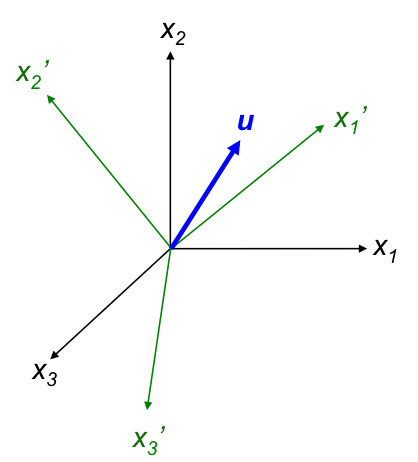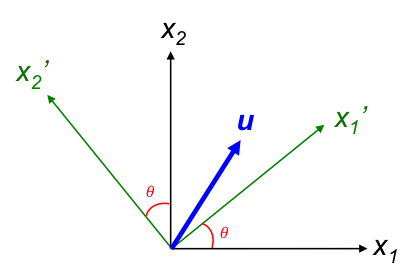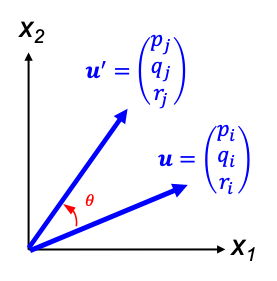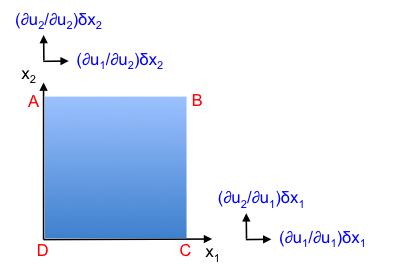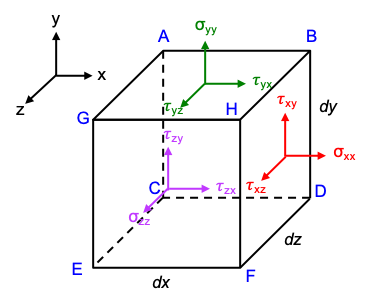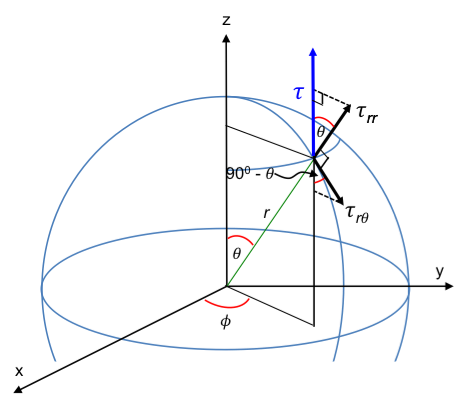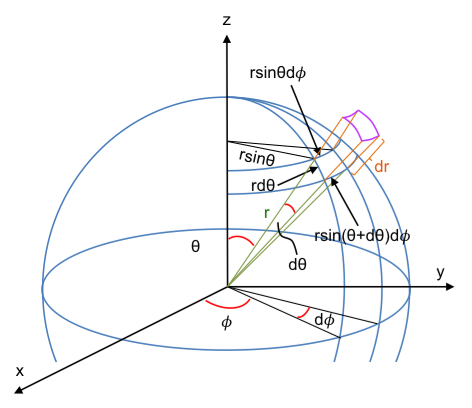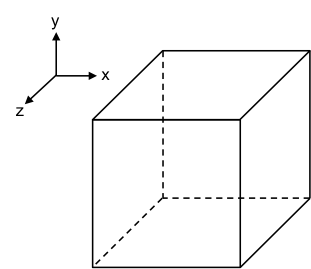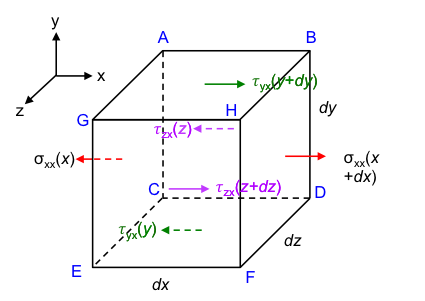An isotropic Cartesian tensor is one where its components are identical in any orthogonal Cartesian system.
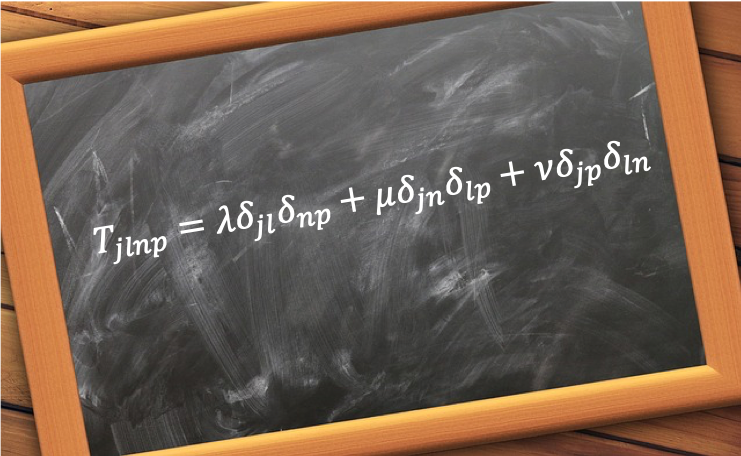
An isotropic property is one that is independent of direction, e.g. thermal expansion of a solid, and therefore has a quantity that is independent of the reference frame. An isotropic property can therefore be described by a Cartesian tensor like in eq15.
To evaluate the properties of an isotropic tensor, we begin by considering a generic fourth-order tensor , whose transformation is expressed by eq14:
Since j, l, n and p, each of which ranges from 1 to 3, the 81 components of are classified in four groups as follows:
-
- Components with four equal subscripts, i.e.
,
and
.
- Components with three equal subscripts, e.g.
,
, etc.
- Components with two different pairs of equal subscripts, e.g.
,
,
, etc.
- Components with one pair of equal subscripts, e.g.
,
, etc.
- Components with four equal subscripts, i.e.
Next, consider the transformation of to
as a rotation about the x3-axis of
where x3 coincides with x’3 (x’3 is equal to x3 and is perpendicular to the plane of the page). From eq12, the transformation matrix is:
Therefore, and
, with the rest of the components of the transformation matrix equal to zero. From eq16, a component of group 2 of the above classification is:
Substituting ,
and
in eq17, we have:
If is an isotropic tensor,
(since an isotropic Cartesian tensor is one where its components are identical in any orthogonal Cartesian system). Hence, the only way to satisfy eq18 is for
. Otherwise, the value of
varies with the value of
, e.g. when
,
.
Another component of group 2 of the above classification is where after expanding and substituting with
,
and
,
Eq20 shows that but does not indicate the value of either component. If the rotation is instead made about the x2-axis at
, the transformation matrix is:
We have , and
, giving
. If
is an isotropic tensor,
Repeating the above steps and assuming that is an isotropic tensor, we find that all the components of
in group 2 and group 4 are zero, which means that all the components of
in group 2 and group 4 are zero.
We shall now analyse the components of group 1 by a rotation about the x3-axis at with the transformation matrix:
We have .
A rotation about the x2-axis at involves the transformation matrix:
and gives .
Comparing the six equations and
, all the components of
in group 1 are equal to one another, which means that all the components of
in group 1 are equal to one another.
Finally, let’s look at the components in group 3. Under a rotation about the x3-axis at , we have
.
A rotation about the x2-axis at gives
.
Comparing the six equations and
, components in group 3 of
(which is equal to the components in group 3 of
) with i = k and m = o are equal to one another. Repeating the above steps, we can show that components in group 3 with i = m and k = o are equal to one another and those with i = o and k = m are equal to one another.
Therefore, if is an isotropic tensor:
i) components of with i = k = m = o are equal and therefore
with j = l = n = p are equal
ii) components of with i = k ≠ m = o are equal and therefore
with j = l ≠ n = p are equal
iii) components of with i = m ≠ k = o are equal and therefore
with j = n ≠ l = p are equal
iv) components of with i = o ≠ k = m are equal and therefore
with j = p ≠ l = n are equal
v) all other components not mentioned are equal to zero
Note that components of parts ii, iii and iv belong to group3 of the isotropic tensor. Now, consider a case of where components of
in iii and iv are set to zero (
is still an isotropic tensor but with more components equal to zero). A rotation about the x3-axis at
gives the transformation matrix:
Since components in part iii and part iv are set to zero and the conditions of part v applies, we have . Furthermore, part i states that
and part ii states that
. So,
If is an isotropic tensor,
and therefore,
. This means that all non-zero components of this particular
have the same value, say, λ, where:
where and
are Kronecker deltas.
Using the same logic by considering the cases of where components of
in part ii and part iv are set to zero and where components of
in part ii and part iii are set to zero, we have:
and
respectively.
Therefore, we can write the general form of the fourth-order isotropic tensor as:

Question
Show that in eq27 continues to satisfy parts i to v, all of which are needed to define a fourth-order isotropic tensor.
Answer
In eq27,
i) the components of with j = l = n = p have values of
and are therefore still equal to one another;
ii) the components of with j = l ≠ n = p have values of
and are therefore still equal to one another;
iii) the components of with j = n ≠ l = p have values of
and are therefore still equal to one another;
iv) the components of with j = p ≠ l = n have values of
and are therefore still equal to one another;
v) all other components not mentioned are equal to zero.
Therefore, the general form of the fourth-order isotropic tensor is valid.


